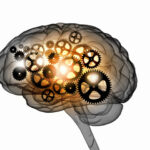What is Panic Disorder?
Panic disorder is a real illness that can be successfully treated. It is characterized by sudden attacks of terror, usually accompanied by a pounding heart, sweatiness, weakness, faintness, or dizziness. During these attacks, people with panic disorder may flush or feel chilled; their hands may tingle or feel numb; and they may experience nausea, chest pain, or smothering sensations. Panic attacks usually produce a sense of unreality, a fear of impending doom, or a fear of losing control.
What are the Symptoms of Panic Disorder?
Adults, children and adolescents with panic disorder have unexpected and repeated periods of intense fear or discomfort, along with other symptoms such as a racing heartbeat or feeling short of breath. These periods are called “panic attacks” and last minutes to hours. Panic attacks can interfere with a child’s or adolescent’s relationships, schoolwork, and normal development. In adults, it can interfere with social relationships, work and family. Those with panic disorder may begin to feel anxious most of the time, even when they are not having panic attacks. They fear they may have another panic attack at any time, since panic attacks frequently develop without warning.
Symptoms of a panic attack, which often last about 10 minutes, may include:
- Sweating
- Difficulty breathing
- Chills or hot flashes
- Trembling or shaking
- Intense feeling of terror
- Nausea or stomachache
- Dizziness or feeling faint.
- Pounding heart or chest pain
- Sensation of choking or smothering
- Tingling or numbness in the fingers and toes
- Fear that you are losing control or are about to die
In severe cases, the individual may be afraid to leave home. Some children and adolescents with panic disorder can develop severe depression and may be at risk of suicidal behavior. As an attempt to decrease anxiety, some adolescents and adults with panic disorder will use alcohol or drugs. People having panic attacks sometimes believe they are having heart attacks, losing their minds, or on the verge of death. They can’t predict when or where an attack will occur, and between episodes many worry intensely and dread the next attack. People who have full-blown, repeated panic attacks can become very disabled by their condition and should seek treatment before they start to avoid places or situations where panic attacks have occurred. Some people’s lives become so restricted that they avoid normal activities, such as grocery shopping or driving. When the condition progresses this far, it is called agoraphobia, or fear of open spaces.
Many people don’t know that their disorder is real and highly responsive to treatment. Some are afraid or embarrassed to tell anyone, including their doctors and loved ones, about what they experience for fear of being considered a hypochondriac. Instead they suffer in silence, distancing themselves from friends, family, and others who could be helpful or supportive.
How Common Is Panic Disorder?
Panic disorder affects about 6 million American adults and is twice as common in women as men. Panic attacks often begin in late adolescence or early adulthood, but not everyone who experiences panic attacks will develop panic disorder. Many people have just one attack and never have another.
What Causes Panic Disorder?
Although the exact cause of panic disorder is not fully understood, studies have shown that a combination of factors, including biological and environmental, may be involved. The tendency to develop panic attacks appears to be inherited. Panic disorder has been shown to run in families. It may be passed on to some people by one or both parent(s) much like hair or eye color can. Panic disorder may also be caused by problems in parts of the brain. And lastly, stressful events and major life transitions, such as the death of a loved one, can trigger a panic disorder.
How is Panic Disorder Diagnosed?
Panic disorder can be difficult to diagnose. This can lead to many visits to physicians and multiple medical tests, which are expensive and potentially painful. When properly evaluated and diagnosed, panic disorder usually responds well to treatment. If no other physical illness or condition is found as a cause for the symptoms, a comprehensive evaluation by a psychiatrist should be obtained (or a Child Psychiatrist in children and adolescents). Psychiatrists and psychologists use specially designed interview and assessment tools to evaluate a person for panic disorder.
Panic disorder is diagnosed in people who experience spontaneous seemingly out-of-the-blue panic attacks and are preoccupied with the fear of a recurring attack. Panic attacks occur unexpectedly, sometimes even during sleep. The doctor bases his or her diagnosis on reported intensity and duration of symptoms, including the frequency of panic attacks, and the doctor’s observation of the patient’s attitude and behavior. The doctor then determines if the symptoms and degree of dysfunction suggest panic disorder.
How is Panic Disorder Treated?
A combination of the following therapies is often used to treat panic disorder. Psychotherapy (a type of counseling) addresses the emotional response to mental illness. It is a process in which trained mental health professionals help people by talking through strategies for understanding and dealing with their disorder. With techniques taught in “cognitive behavioral therapy,” the person may also learn new ways to control anxiety or panic attacks when they occur. Specific medications may also stop panic attacks. The anti-depressant drugs (such as Celexa, Lexapro, Paxil and Zoloft) and anti-anxiety medications such as Xanax or Klonopin are used to treat panic disorders. Sometimes, heart medications (such as beta blockers) are used to control irregular heartbeats. In addition, relaxation techniques, such as breathing retraining and positive visualization, may help a person during an attack.
Many individuals (including children and adolescents) with panic disorder respond well to the combination of medication and psychotherapy. With treatment, the panic attacks can usually be stopped. Early treatment can often prevent agoraphobia, depression, and substance abuse, but people with panic disorder may sometimes go from doctor to doctor for years and visit the emergency room repeatedly before someone correctly diagnoses their condition. Panic disorder is one of the most treatable of all the anxiety disorders, responding in most cases to certain kinds of medication or certain kinds of cognitive psychotherapy, which help change thinking patterns that lead to fear and anxiety. If not recognized and treated, panic disorder and its complications can be devastating.




